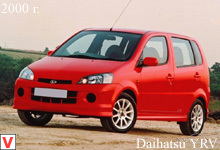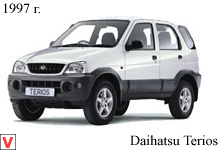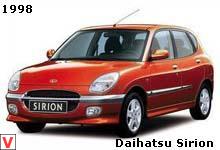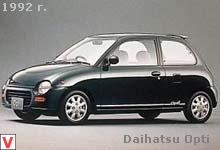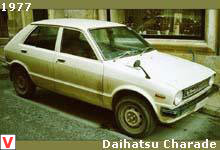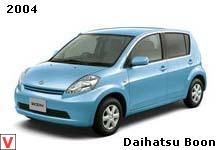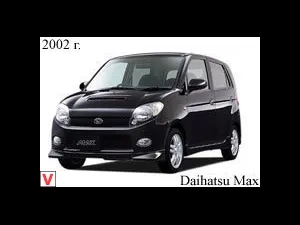
Production wagon Daihatsu Max began in 2001. Structurally, this car is the average between a minivan and a hatchback; his mission was to occupy a niche among the models of Daihatsu Move and Mira. Visually, Max reminds Daihatsu YRV in a slightly reduced form.
From 2001 to 2003, 51 modifications of this model were produced, differing in power units, transmissions and equipment. Production continued until 2006; The successor to Mach was the Sonica. The design of the model, in contrast to the appearance of other similar machines, is quite dynamic, especially in the R and RS versions, thanks to the aerodynamic front spoiler in the shape of a socket and door sills.
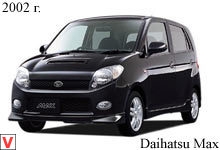
Dimensions of the bearing 5-door 4-seater body 3395/1475/1550 mm with a wheelbase of 2360 mm and a track 1300/1260 mm. The curb weight of the car is 860 kg, the permissible total is 1090 kg, and the minimum ground clearance is 140 mm. Standard equipment includes a front spoiler, electric rear-view mirrors, front fog lights, tinted windows, rear wiper, electric windows, central locking, remote control key, air conditioning, radio with CD and MD player.
As an option, a rear spoiler, alloy wheels and navigation system were offered. The internal dimensions of a roomy cabin are 1765/1275/1270 mm. Enough space, especially overhead. The telescopic steering column is adjustable in both height and reach.
On all versions, except for the cheapest category “casual” and cars with manual gearboxes, the transmission control knob is placed on the steering column. The design of the front panel is not inferior in originality to the exterior of the car. The 0.7-liter gasoline 3-cylinder 12-valve EF-VE DOHC engines (58 hp / 7600 rpm, 61 Nm / 4000 rpm), as well as turbo-charged in-line 4-cylinder 16-valve with distributed injection, were installed on the Max EF-DET (64 hp / 6400 rpm, 107 Nm / 3600 rpm) and JB-DET (64 hp). The brand of gasoline consumed - AI-92 for EF-VE and AI-95 - for turbocharged.
Thanks to the modern afterburning system, exhaust products of combustion Max belongs to the category of vehicles with ultralow content of harmful substances in exhaust gases (E-LEV). The average gas mileage for a car with an EF-VE engine is 5.2 liters per 100 km. The engines were aggregated with a 5-speed manual or 4-speed automatic transmission. Max cars were equipped with both front-wheel drive and permanent all-wheel drive (without locking the center differential). If we consider the version with all-wheel drive, then for the first time in the history of a compact car, the 4WD system was used here, distributing torque between the driving axles.
The type of steering gear-rack with power steering, turning diameter - 8.6 m. Front suspension with MacPherson strut, coil springs and stabilizer, rear - three-link with coil springs. In motion, the car is comfortable and manageable, smoothness is quite high. The front brake disc, rear - drum.
The standard tire size is 165/55 R14, for all-wheel drive versions - 165/50 R15. Driving safety is designed to provide 2 airbags, an amplifier of stiffness in the doors, a button for blocking windows, three-point seat belts with tensioners and a rugged body. The child seat is also attached. For a fee, you can install additional side airbags and a stoplight repeater. The active safety system provides for the presence of ABS and Brake Assist Brake Assist. Modifications R and RS have a sports tuned suspension, equipped with 64-horsepower turbo engines with the Twin Cam system.
On the R version, 4-cylinder engines were installed, and on the RS car category - 3-cylinder engines. Transmission - 4-speed automatic transmission with manual shift mode. The magnitude of torque and efficiency is preferable to a three-cylinder engine; the main gear of the R model is supplemented by the LSD friction differential.
